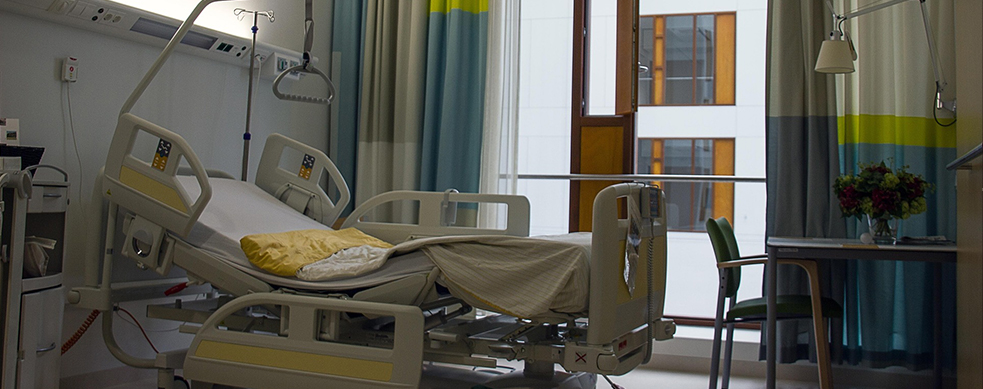
The Importance of Using Ozone in Hospitals
Today, in the healthcare sector, hospitals and other healthcare institutions focus on critical processes such as preventing the spread of diseases, hygiene and sterilization, as well as patient care. Infections, in particular, are a threat that is frequently encountered in hospitals and causes serious health problems. For this reason, effective solutions are required to ensure hygiene, prevent infections and increase patient safety in hospital environments. Ozone is a disinfection and air purification tool that has been increasingly used in hospital environments in recent years with its strong oxidizing properties. The use of ozone in hospitals has many important benefits in terms of both protecting patient health and ensuring environmental hygiene.
What is Ozone and How Does It Work?
Ozone (O₃) is a gas formed by the combination of three oxygen atoms. It is known for its strong oxidizing properties and is used as an effective disinfectant in killing microorganisms, viruses, bacteria and fungi thanks to this feature. Ozone is found in the ozone layer in the high atmosphere in nature and is important for a healthy life. Ozone produced by ozone generators for industrial uses is widely used in ventilation systems, water purification devices and sterilization processes.
Benefits of Ozone Use in Hospitals
Prevention of Infections and Disinfection
Hospitals are environments where many infections and pathogens can spread. Especially since patients’ defense systems are weak, bacteria, viruses and fungi can easily spread. Infections that may occur in the hospital pose a danger not only to patients but also to healthcare professionals. Ozone effectively kills these harmful microorganisms thanks to its strong oxidizing properties.
Ozone is effective in disinfecting pathogens suspended in the air, contaminants on surfaces and harmful microorganisms mixed with water. Ozone prevents bacterial and viral infections. It especially prevents the proliferation of antibiotic-resistant bacteria such as MRSA and prevents the spread of diseases. Thanks to the use of ozone, the level of sterility in the hospital environment increases significantly.
Improvement of Air Quality
Air quality in hospitals has a direct impact on patient health. Poor ventilation and polluted air can negatively affect patients’ recovery processes and worsen health problems. Air quality, especially in intensive care units, surgical rooms, patient rooms, waiting rooms and emergency rooms, must be constantly monitored and cleaned.
Ozone effectively destroys harmful microorganisms, allergens, bad odors and toxic gases in the air. Ozone generators improve the air quality in hospital rooms and prevent bacterial and viral contamination. In addition, ozone neutralizes bad odors in the air, allowing patients and healthcare professionals to be in a cleaner environment. It eliminates viruses and bacteria in the air and prevents the spread of respiratory infections, especially influenza.
Surface Disinfection
Surfaces in hospitals can often provide shelter for disease-carrying microorganisms. For example, patient beds, patient equipment, door handles and other frequently touched surfaces can cause infections to spread. Ozone effectively kills and disinfects microbes on these surfaces.
Ozone is especially effective in cleaning large areas, complex and hard-to-reach surfaces. Using ozone generators, rooms, corridors and other large surface areas can be disinfected. This advantage of ozone provides significant time and labor savings in large and constantly polluted areas such as hospitals. In addition, the use of ozone reduces dependence on chemical disinfectants and minimizes environmental damage.
Ensuring Water and Food Hygiene
The hygienic nature of water and food used in hospitals is vital for patient health. Ozone is also widely used in disinfecting water. Ozone kills pathogens in water. In this way, the cleanliness of patients’ drinking water is ensured. In addition, the cleanliness of food used to feed patients is also of great importance. Ozone kills harmful microorganisms on food products and ensures that food is presented to patients in a hygienic manner.
An Alternative to Chemical Substances
Chemical disinfectants are generally used for disinfection in hospitals. However, these chemicals can pose a risk to healthcare professionals and harm the environment in some cases. Ozone is a completely natural disinfectant and can replace chemical disinfectants. Ozone use minimizes health risks and protects the environment by reducing the chemicals used in the hospital.
Areas of Use of Ozone in Hospitals
Indoor Air Cleaning and Steriilization
Ozone can be used to clean the air in intensive care units, operating rooms, corridors, waiting rooms and patient rooms of hospitals. Ozone generators eliminate microbes and harmful pathogens in areas where patients are located. Thus, it provides a clean air environment.
Water Purification
Ozone can be used to disinfect drinking water systems in hospitals. In addition, ozone cleans the water in sterilization processes.
Surface Sterilization
Ozone is effective in killing bacteria, viruses and fungi found on hospital surfaces. Therefore, it can be used on hospital rooms, beds, medical equipment and other surfaces.
The use of ozone in hospitals is extremely important in terms of protecting patient health, preventing infections, improving air quality and providing environmentally friendly sterilization. With its strong disinfectant properties, ozone contributes to the provision of hygiene in hospitals, prevents the spread of diseases and ensures that patients are treated in a healthier environment. In addition, the fact that ozone is environmentally friendly and can be used instead of chemical disinfectants also provides significant cost savings for hospitals. The increasing preference of ozone technology in the health sector will greatly contribute to the increase of hygiene levels and patient safety in hospitals.
İlker KURAN
Alperen Engineering Ltd. Şti.







